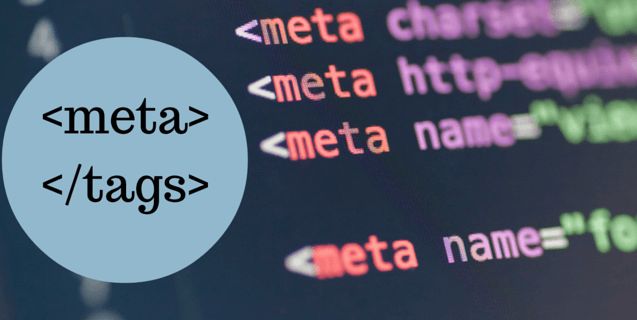
How to Properly Write SEO META Tags
Incorporated into the HTML code of many webpages, SEO META tags affect not only how a website appears in search listings, but also, how high or low a position it receives in search results.
Read on to learn how to write META tags properly and effectively.
WHAT ARE META TAGS?
Meta tags area short snippets of text which describe various elements of a web page’s content. Meta tags don’t usually appear on the page itself, however, they can show up in search results. Some can also affect SEO rankings, which is why they are so important.
For SEO purposes the are 4 principal types of meta tags to be aware of:
- Title Tags: The title tag can usually be thought of as the headline or title of a given page. The title tag shows up in search engine results, and counts for SEO rankings.
- Description Tags: The meta description is a brief (1-2 sentence, <155 character) description of the content of a page. The meta description usually shows up in search engine results; however, it does not count for SEO rankings.
- Keyword Tags: The keyword tag is a place to associate some keywords with a given page. The keyword tag does not show up to users or search engines anywhere, nor is it used for SEO rankings.
- Other Tags: There are a few other tags that help search engines understand your content. See below for more details.
Keep reading for more detailed information about each one of these tags.
TITLE TAG
Perhaps the most important META tag, the TITLE tag determines the clickable title of a search result, as well as the text which appears on the title bar of a web browser.
Here are some tips on how to properly write this tag:
- Use fewer than 55 characters; otherwise, part of the title may be cut off by browsers and search engines.
- Every page on the website needs to have a unique title.
- Your primary keyword target should be at the beginning of the TITLE tag.
- Place your company name at the end of the TITLE tag.
- Always think about users when writing your title. Is the title appropriately descriptive and helpful for them?
DESCRIPTION TAG
The 2nd most important META tag, DESCRIPTION determines what text appears below the title in search results (with some exceptions). People who visit a webpage will not see this tag, unless they look at the source code.
Tips on how to use a meta description properly:
- Keep the description approximately 125-155 characters.
- Make sure the meta tag accurately reflects the content of the page for which it was written.
- Use the description to market to the user and increase the click through to the website.
- The description is not a ranking factor, but be sure to use your target keyword(s) and keyword phrases so that they will be bold in the search results.
META KEYWORD TAG
A non-important META tag is the KEYWORD TAG as search engines do not use them as a ranking factor. The META KEYWORD TAG contains one or more search keywords that relate to the web page in question. Here are a few tips:
- In general, the keyword tag can be ignored entirely.
- The one possible exception is if you want to use the tag as a sort of internal “map” for each page. That is, the keyword tag can help you remember which page keywords you are optimizing for.
OTHER SEO META TAGS
Some lesser-known META tags are not used by most search engines and browsers, making them minimally useful. However, one other fairly important META tag is ROBOTS. It gives specific instructions to search engine “robots” or “spiders”; automated computer programs which visit and index websites, recording information that will appear in search results.
You do not need to know HTML to write META tags properly. Programs like Frontpage and Dreamweaver allow users to set the META tags for a web page design automatically. For example, the function for setting META tags in Frontpage is located in “Page properties”, under the “Custom” tab. The TITLE is set under the “General” tab.
SOCIAL OPEN GRAPH TAGS
Another type of tag that is worth mentioning are thr Open Graph Tags. Open Graph tags are not strictly meta tags, but they behave very similarly and are very important for social sharing.
Like meta tags, Open Graph (or ‘OG’ tags contian information which is read and used by social media sites. For example, when you share a piece of content on LinkedIn, that site chooses which pieces of information to show based on the content for the OG tags.
There are a few different types of OG tags:
- og:title – The title of you page, post or content, as it will appear on shareable links from search engines.
- og:site_name – The name of your website.
- og:description – The short (1-2 sentence) description of your content which will show as a snippet preview on social sites. This is arguably the most important OG tag.
- og:type – A classification of your type of content. A full list can be found here.
- og:image – A link to the image you would like to associate with the content. This will show up for users on social media.
- og:url – The URL users will see for your content.
How well are your META tags written? How are they affecting the visibility of your website? Contact Volume Nine for an SEO Audit today, and we will help you with the answers to these questions, and more.









